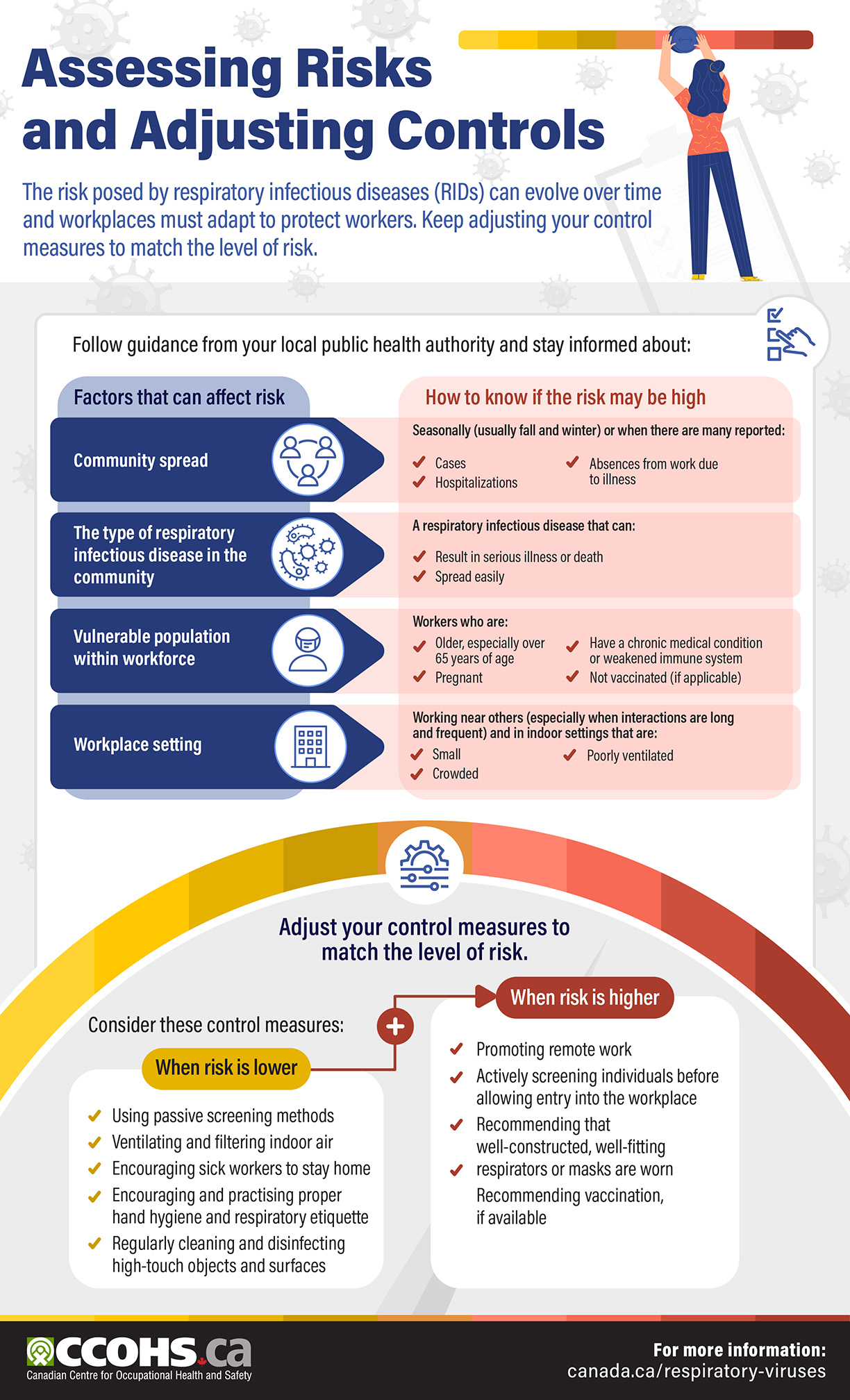Assessing Risks and Adjusting Controls
[PNG, 293 KB]

Description: Assessing Risks and Adjusting Controls
The risk posed by respiratory infectious diseases (RIDs) can evolve over time and workplaces must adapt to protect workers. Keep adjusting your control measures to match the level of risk.
Follow guidance from your local public health authority and stay informed about:
|
Factors that can affect risk
|
How to know if the risk may be high
|
|---|---|
Community spread
|
Seasonally (usually fall and winter) or when there are many reported:
|
The type of respiratory infectious disease in the community
|
A respiratory infectious disease that can:
|
Vulnerable population within workforce
|
Workers who are:
|
Workplace setting
|
Working near others (especially when interactions are long and frequent) and in indoor settings that are:
|
Adjust your control measures to match the level of risk.
- Using passive screening methods
- Ventilating and filtering indoor air
- Encouraging sick workers to stay home
- Encouraging and practising proper hand hygiene and respiratory etiquette
- Regularly cleaning and disinfecting high-touch objects and surfaces
- Promoting remote work
- Actively screening individuals before allowing entry into the workplace
- Encouraging sick workers to stay home
- Recommending that well-constructed, well-fitting respirators or masks are worn
- Recommending vaccination, if available
For further information: canada.ca/respiratory-viruses.

